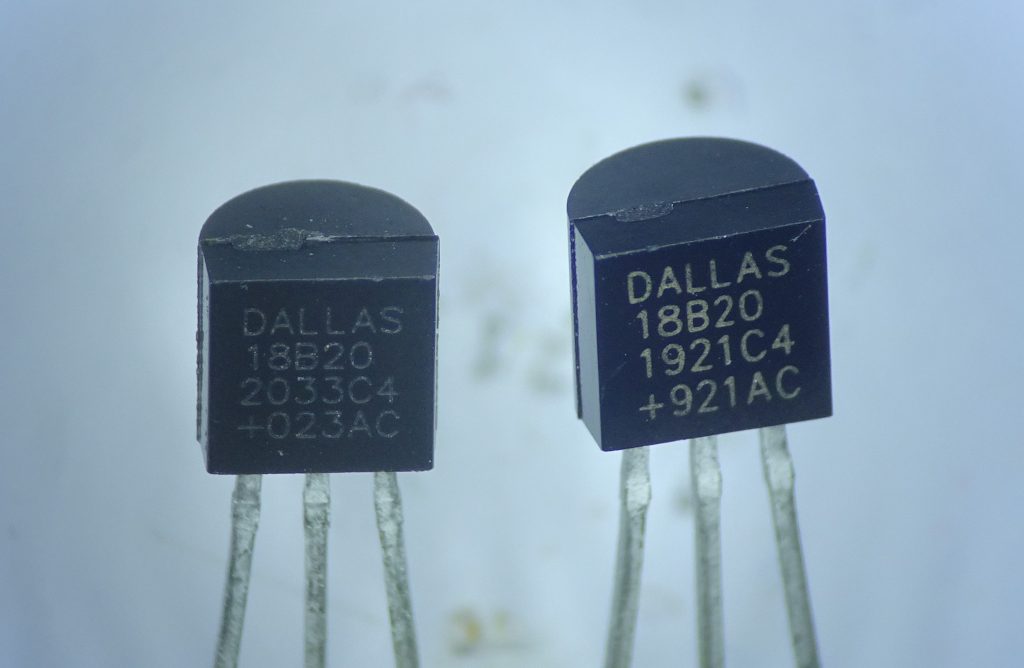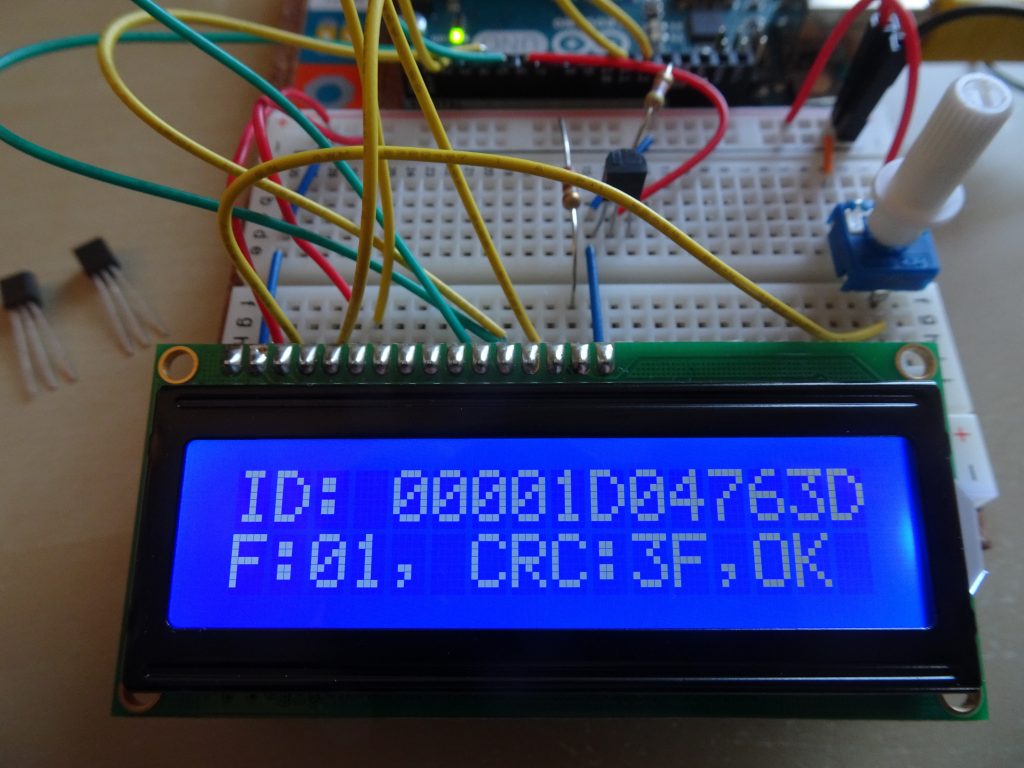The DS18B20 is a digital temperature sensor that communicates through the One-Wire protocol. Like the DS2401 that we looked at earlier, it is housed in a three-pin TO92 package and can be read out using just one pin (plus ground). It’s made and sold by Maxim Integrated, although still labelled “DALLAS” on the package. Introduced in 1999, the DS18B20 was the successor to the DS1820 and provided a higher resolution (up to twelve bits, instead of the DS1820’s nine).
This part has become wildly popular over the past few years, because it is reasonably cheap, quite accurate, and very easy to use with microcontrollers. It is widely available online, but its popularity has, unfortunately, also given rise to an industry of fake DS18B20s. Although they usually work, there is no guarantee that they meet the specs listed in Maxim’s datasheet.
These fake chips are made by small semiconductor companies that have designed a drop-in replacement for the Maxim part, copying the exact functionality. There’s nothing wrong with second-sourcing a part like that (it’s how many semiconductor companies started in the first place), but marking them with the Dallas brand and selling them as if they’re genuine Maxim parts is of course illegal. Most likely it’s not the manufacturers that apply the fake label, but shady companies that buy large stacks of second-source chips, re-label them and sell them as if they’re the real thing.


